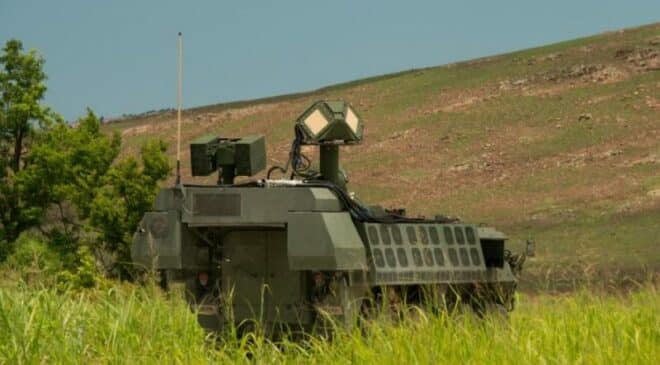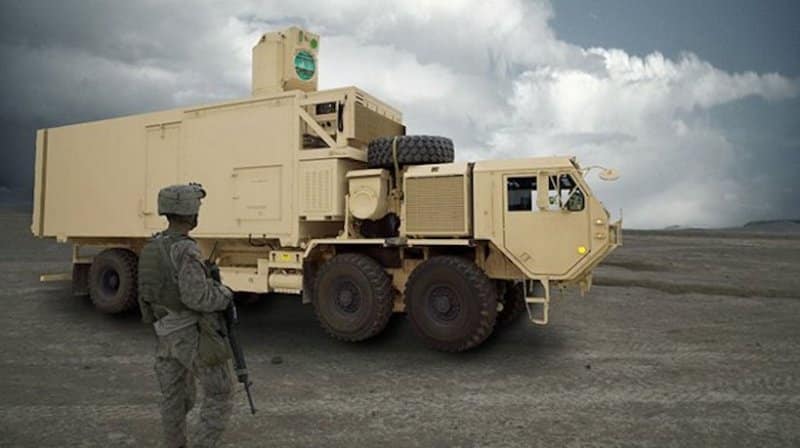Faced with the proliferation of drones and precision ammunition, light or not, the US Army has opted for directed energy armies, with four key programs ranging from high-energy lasers to microwave guns, including portable electromagnetic jamming systems.
In many fields, such as long-range surface-to-air systems, anti-tank missiles, electronic warfare and even artillery and armour, the US Army has seen its technological advantage inherited from the end of the Cold War eroding over years of intervention in Iraq and Afghanistan, while other countries, especially Russia and China, invested methodically to catch up, and sometimes even overtake US technology.
But there is one area in which the American armies have been able to invest in time and sufficiently to maintain a significant gap over their competitors, directed energy weapons, in particular to ensure close anti-aircraft protection of its major units and sites.
These technologies are now reaching maturity, and the US Army plans to start deploying them on a massive scale between 2025 and 2027 to counter, among other things, emerging threats such as drones and swarms of drones, but also missiles, rockets and artillery and mortar shells, the range and precision of which have progressed very significantly in recent years.
To carry out this mission, the US Army has been developing, for several years, 4 new specialized systems, capable of providing protection adapted to the threat: a mobile system, called DE M-SHORAD, a heavy system called IFPC-HEL , a heavy system specialized in the elimination of drone swarms named IFPC-HPM, and a set of light anti-drone systems C-sUAS.
Each of these systems, through its power, mobility and interconnection capabilities, will make it possible to respond to specific scenarios, providing operational added value that the US Army considers decisive in the high-intensity engagements that are coming. against adversaries with advanced military and technological means.
The Stryker Guardian DE M-SHORAD
The first of these systems to enter service from 2025 will be the Guardian, designated by the acronym Direct Energy Mobile SHOrt Range Air Defense or DE M-SHORAD. It is a 50 kW high-energy laser coupled to an aerial target detection and designation system and mounted on an 8×8 Stryker armored vehicle, the workhorse of the US Army Brigade Combat Team. .
With such power, the Guardian will be able to provide protection against category 1 and 2 aerial drones, i.e. drones weighing less than 30 kg operating at an altitude of less than 3500 feet, but also, in a certain extent and with a sufficiently long exposure time, against 3ᵉ category drones, which can reach 650 kg and evolve up to 18.000 feet in altitude, or 6 km, in which we find in particular the famous Turkish drone TB2 Bayraktar.
It will also be able to intercept RAM threats (Rocket, Artillery and Mortar shells) as long as they are not too fast or too massive. Finally, it can be used against helicopters, more to damage them than to destroy them.

It should be noted that the defense against aircraft and ballistic threats is not the responsibility of the SHORAD systems in the US Army, this being assigned to heavy anti-aircraft systems such as the Patriot, to light surface-to-air missiles such as the Stinger, and the air superiority provided by the US Air Force, the system being limited by the energy production capacity on board the Stryker to maintain mobility consistent with the need to support the forces.
Like all of these new directed energy systems, the Guardian will be interconnected with the detection systems present in the theater of operations, in application of the Joint All-Domain doctrine at the heart of the engagement strategy. US in the years to come.
The Valkyrie IFPC-HEL Directed Energy System
In order to increase the power of its directed energy weapons, so as to extend their performance and protection capabilities, the US Army has relied on containerized modules that can be transported by truck.
The Valkyrie is one of the two systems based on this model belonging to the Indirect Fire Protection Capability program, or IFPC, and exploiting a high energy laser or High Energy Laser, this having given the acronym IFPC-HEL.

The rest of this article is for subscribers only
The Classic subscriptions provide access to
all articles without advertising, starting at € 1,99.
Newsletter subscription
Register for the Meta-Defense Newsletter to receive the
latest fashion articles daily or weekly


[…] stray ammunition. The 300 Kw laser delivered by Lockheed-Martin is, for its part, intended for the IFPC-HEL Valkyrie program embedding in a 20-foot container the laser, the detection and sighting system, as well as […]
[…] SHIELD developed by the US Air Force. But it is undoubtedly the US Army, through the Indirect Fire Protection Capability program, which is the most dynamic in this field, with the 50 Kw Guardian laser system mounted on […]